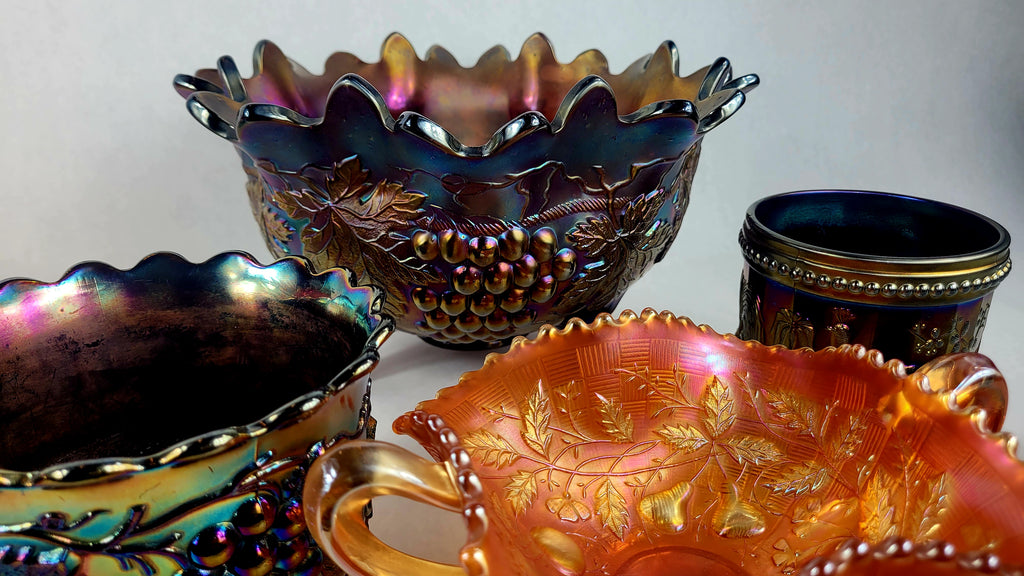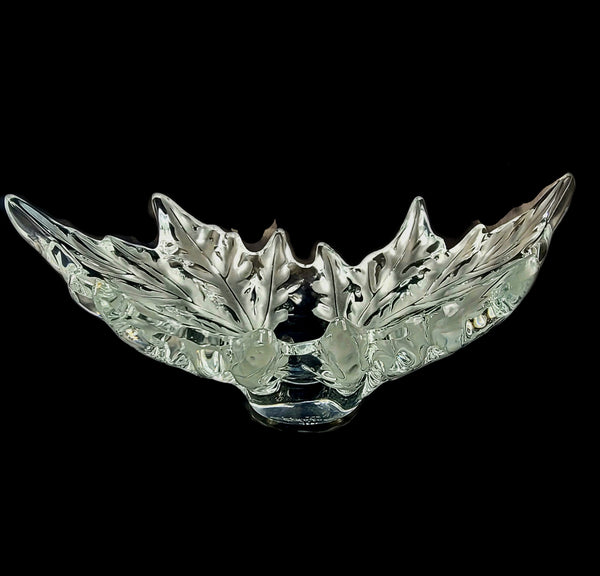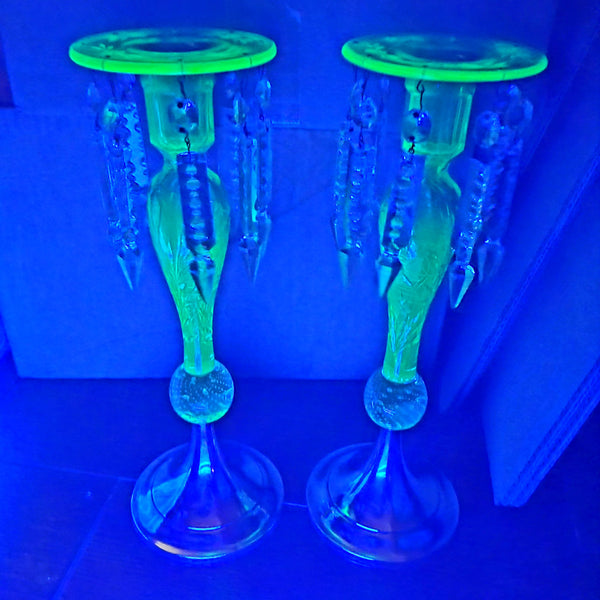How to Identify and Value Antique Colored Carnival Glass

Peruse our antique glass collection. (Message us in the chat box if you are looking for something you can't find.) Video Translation: Hi this is Jennifer with City Farmhouse Antiques and I am here to show you a little bit about how to identify antique colored glass. Specifically, antique carnival glass. When you are looking at antiqe glass you want to look at how it is made. You want to look at the color of the piece, the pattern, and of course for any damage. Antique carnival glass back in the early 1900's was really made to copy Louis Comfort Tiffany's beautiful Tiffany favrile glass. Tiffany glass was very expensive and still is today and most people couldn't afford it. They started mass producing carnival glass and it was used for give aways for advertising, souvenirs, carnivals and people collected it. It was beautiful and much cheaper to buy and so colorful and was known as "poor man's Tiffany glass". When you are looking at a piece of glass to identify it's value you want to look at how it was made. Carnival glass was molded and the molds were many times made of wood. You can see the mold lines when you look at identifying a piece. This piece back here is actually a beautiful console bowl because it is very large. It is footed and made as a centerpiece. When looking at how a piece is made if there are mold marks, which there are on this piece, this is where they would have taken the very hot glass and put it into the wooden mold and pushed it into all of the creases. As they pushed the molten glass into the pattern lines are left from the mold in the glass. Some molds had 2 seams, others had four etc. This happens to be a footed piece. There you can see the feet. This is in a grape pattern. To find and identify the true color of a piece because there are mulitple colors, the electric blue, the beautiful fuschias, and gold the true color can be found on the very bottom. Look at the bottom. This is going to be an amethyst purple piece. It is important to note while I am showing you this those fine lines there. These are what you call straw marks. Many people may think this is damage. This is not actually damage, but a crease that was made in the glass when the piece was cooling in the mold. There you can see a mold mark so we know this piece was made from a mold versus a hand blown piece of glass. So how do you identify a hand blown piece of glass? Here is an antique rose bowl. If you look at the bottom you will be able to tell a hand blown piece because at the very bottom that inner circle is where the piece of molten glass was actually cut off of the punt or stick used to make the piece of glass known as a pontil. Some pontils will be polished making them smooth to the touch and some will be rough. The pontil sometimes is also an indicator of the maker and value, but again not always the case. So that is the difference in how to tell if a piece was made with a mold versus hand blown. Carnival glass will have these iridescent colors and you will see mold marks. You may or may not see makers marks and you want to assess each piece for any damage. Here you can see the damage inside this piece. That's why I don't recommend ever putting anything in a piece because you can see how they can scratch and become damaged. Here you can see what we call makers marks, trademarks or a logo. There in the middle you can see the letter "N" with a circle around it. That stands for Northwood. Many pieces won't have a makers mark. That is okay. It is still carnival glass. Pieces can be better identified by their pattern which also gets tricky because as these glass houses closed other glass houses would purchase their molds and continue producing the same piece. Being able to identify the type of piece is important too. For example, this piece is a little footed piece with a grape pattern and it is unmarked. This piece is also damaged on the inside. Someone put something in it unfortunately. There you can see this piece is an amethyst or purple piece and there you can see the mold lines. Here is another piece in the marigold color. There are really over 60 different recognized colors. This piece has a fruit pattern and this dish is what we would call a nappy dish or bonbon dish for nuts or candy. Here you can see the mold marks on the side and the bottom. There is a bubble in this piece. This also looks like damage, but it is a bubble that was formed when the hot molten glass was put into the mold. Damage you will feel and I can't feel this bubble so it is inside the glass. Here is another beautiful piece with a peacock pattern. Again this is going to be amethyst or purple on the bottom. This is going to be Northwood because it has the N makers mark on the bottom. This is a little bonbon dish. You see how it is a low profile dish and has a double handle. The true color on this piece is green and there is no makers mark. All these pieces are so beautiful in a case or to sit out and just enjoy. Here is another green piece with a floral pattern. Again, if you see something you like message us in the chat box on the website. I don't have them up on the website yet, but that doesn't mean you can't purchase them and we can't ship them to you. This is another double handled bonbon dish with the question mark pattern. There is another pretty piece I will show you. This was my grandfather's piece. It is a footed compote. A compote is going to be a footed taller bowl. There you can see this beautiful pattern here. There are hundreds of patterns that can be easily identified online or in great resource books. Every glass house had their own unique iridescent finish to pieces based on the metallic salts used and the metals they used and the temperature of the glass when it was applied that dictated the color, iridescense and depth of color. They actually applied the chemicals in a separate building at the glass factory known as "dope houses". The color was applied there, and then the pieces would be placed in cartons with straw and shipped out. This video gives you an overall idea of antique colored carnival glass. We will have more videos on identifying antique colored glass as well as crystal etc. Be sure and check out all our beautiful pieces on our website at www.cityfarmhouseantiques.com where we always have more than just antiques. Give us a like on Facebook and sign up for our newsletter to get first dibs on our latest finds. Be sure and check out all of our videos and let us know if there is something you would like us to cover in a video that will help you. See you next time.
Leave a comment
Comments will be approved before showing up.




